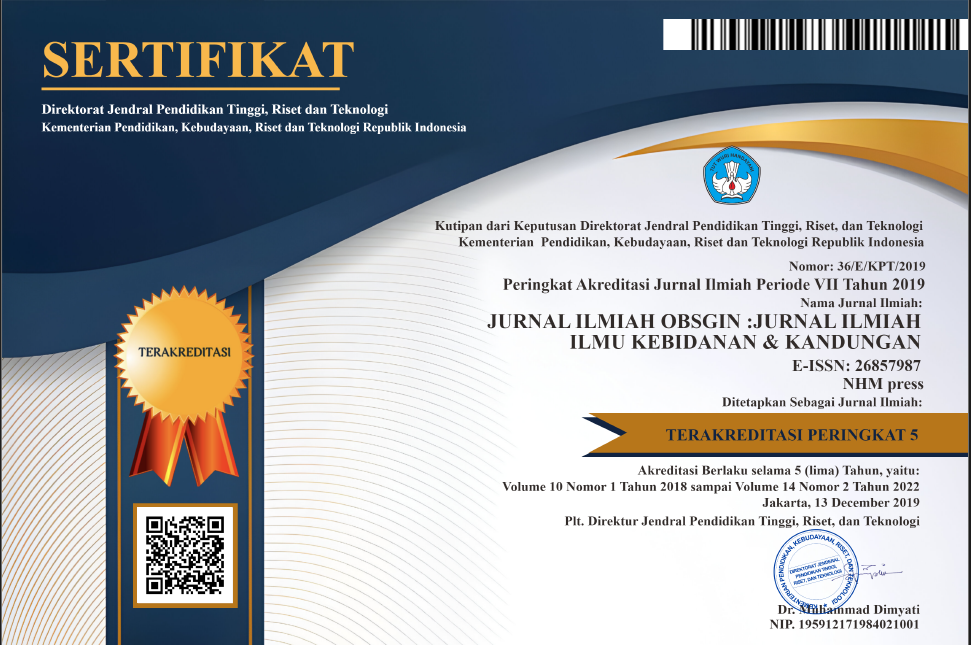A SCOOPING REVIEW BETWEEN NUTRITIONAL STATUS AND EARLY MENARCE OF ADOLESCENT WOMEN IN INDONESIA
Abstract
Background :. Menarche is menstruation or menstruation that comes for the first time and is the culmination of a series of changes that occur in a young woman who is reaching adulthood and as a sign that she is capable of becoming pregnant or her reproductive system is starting to function, the results of the 2018 Basic Health Research (Riskesdas) state that 70.1% of young women aged 10-19 years have experienced menstruation and as many as 29.9%.
Purpose: This study aims to determine the relationship between nutritional status and the incidence of early menarche in female adolescents in Indonesia
Research Methods: The study is a scoping review with PRISMA guidelines, the data bases used are Pubmed, Google Scholar and Science Direct, The Scoping Review method was carried out using the following steps; 1) identifying research questions; 2) identifying relevant studies, through the Pubmed, Google Scholar, and Wiley Science Direct. The article criteria used are articles published from 2019 to 2023 and discussing of nutritional status and Early menarche; 3) the selection of articles was described using the Prisma Flow Chart where in full text search results, 7 articles was used for the review as these have quality assessment and according to population, methods, and results; 4) carrying out data charting; and 5) carrying out the compilation of results reports.
Research Results: There are 7 articles related to nutritional status on the incidence of menarche. All articles use a cross sectional design. Of the 7 articles, there were 4 articles which showed a relationship between nutritional status and the incidence of early menarche in young women.
Conclusions and Suggestions: it can be concluded that there is a relationship between nutritional status and the incidence of early menarche in young women in Indonesia. It is hoped that young women can apply healthy consumption patterns so that their nutritional status is normal.











